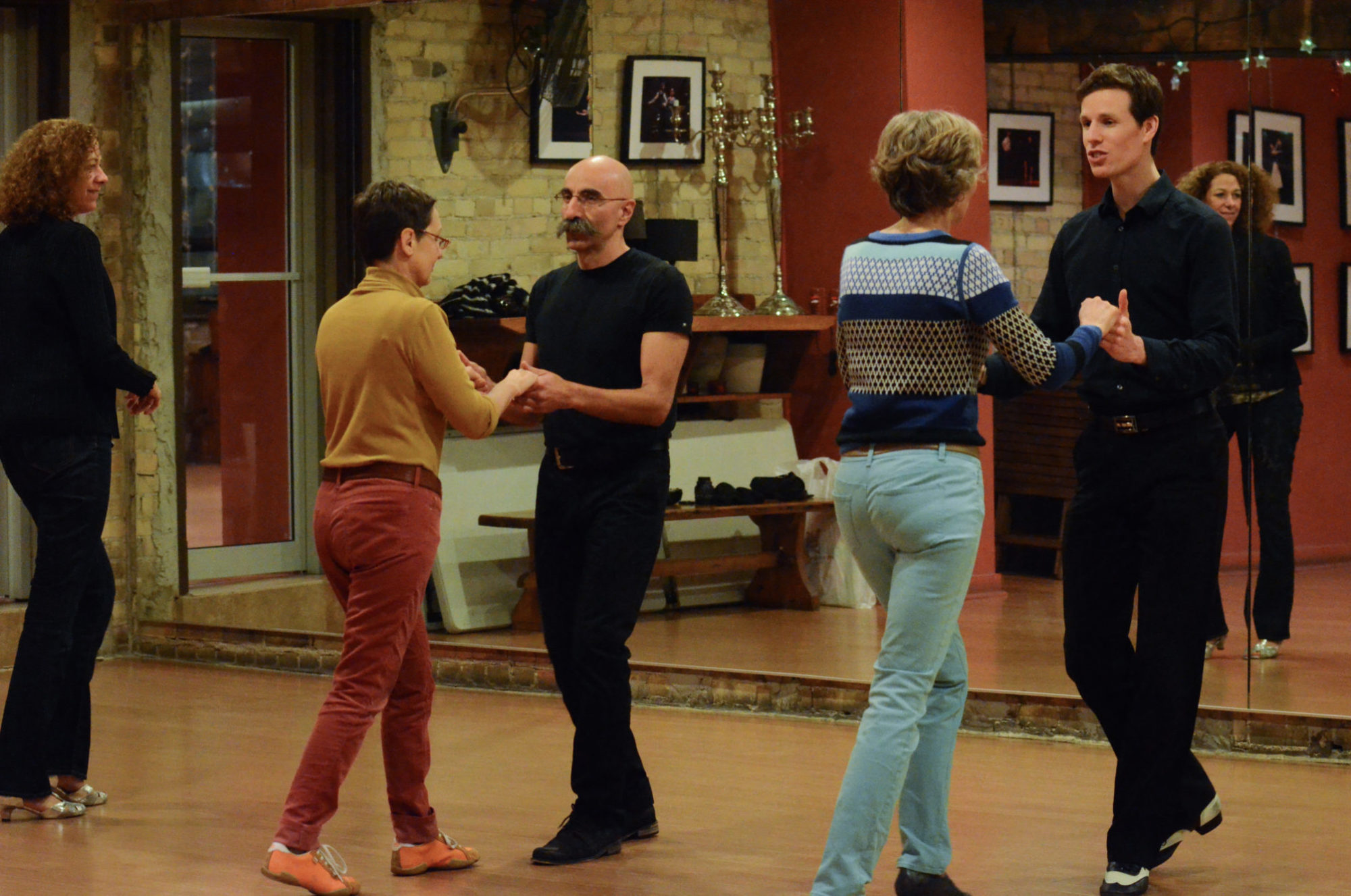It’s difficult to over-estimate the benefits of dancing - virtually no part of your body or mind is left unimproved if you work at it long enough. For the sake of this article however, I researched some of the main benefits of dancing you will start seeing as you improve.
The body is the most obvious place where you will see improvement. Dancing is a first choice for many people as a supplement to going to the gym or other exercise, mainly because it's so much fun you're not even aware of many calories you are burning.
Body-related benefits include:
- Better co-ordination (Nigmatullina et al. 2013)
- Low-impact cardiovascular fitness
- Better posture
- Improved balance (Nigmatullina et al. 2013)
- Increased muscle tone (especially the core and leg muscles)
- Greater flexibility (i.e. how much range of motion your body has without injuring yourself)
- Improved lung capacity (which increases your endurance in any strenuous activity)
- Faster reflexes
- Weight management
Mental benefits are less obvious, but no less important. Dancing involves integrating multiple brain functions; emotional, physical, musical, rational, and so on. It also requires - especially for the follower - rapid-fire, split-second decision making, which together increases overall cognitive ability.
Some of the mental benefits include:
- Better memory (Warburton et al. 2013)
- Decreased risk of Alzheimer’s and Dementia (Verghese et al. 2003)
- Reduced negative symptoms of Parkinson’s disease (Hackney and Gammon, 2009)
- Improved creative or spontaneous thinking
- Greater body awareness and sensitivity
- Decreased stress (Leste and Rust, 1990)
- Stronger focus
- Greater multitasking ability
- Stronger relationships
- Greater vitality and reduced depression (Haboush et al. 2006)
Some of the benefits are obviously great depending on how intense your training. A social dancer, for instance, burns about as many calories per minute on the dance floor as a camper rowing across the lake. A competitive dancer, on the other hand, consumes as many calories every minute as a runner doing the 500 m sprint. A leader who focuses on constantly challenging themselves with different combinations adjusted to their partner will experience more of the cognitive benefits than a leader who uses the same combinations over and over.
There are also certain less tangible benefits, such as feeling more confident, or sexy, or elegant, depending on what you bring to the dance. And of course, it’s a fun way to socialize with other people, learn a new skill, and so on. Like I said, it’s difficult to underestimate the benefits of dancing. So head on over to the local studio or dance club, and break it down.
P.S. I have included what scientific papers I could find to give this article some additional credibility, but I can always use more! Let me know if you come across any papers on the benefits of dance, and I will happily include them in this or a future post. Thanks!
Sources
Haboush, Amanda , Mark Floyd, Joshua Caron, Mark LaSota, and Krisann Alvarez. Ballroom Dance Lessons for Geriatric Depression: An Exploratory Study. The Arts in Psychotherapy 33 (2006): 89-97.
Hackney, Madeleine E. BFA, Earhart, Gammon M. PhD. Effects of Dance on Movement Control in Parkinson’s Disease: A Comparison of Argentine Tango and American Ballroom. J Rehabil Med. May 2009; 41(6): 475-481.
Leste, A., and Rust, J. Effects of dance on anxiety. American Journal of Dance Therapy, 1990; 12(1), 19-25.
Nigmatullina, Yulia, Hellyer, Peter J., Nachev, Parashkev, Sharp, David J., Seemungal, Barry M. The Neuroanatomical Correlates of Training-Related Perceptuo-Reflex Uncoupling in Dancers’ Cerebral Cortex. 27 September 2013. doi:10.1093/cercor/bht266.
Verghese, Joe M.D., Lipton, Richard B. M.D., Katz, Mindy J. M.P.H., Hall, Charles B. Ph.D., Derby, Carol A. Ph.D., Kuslansky, Gail Ph.D., Ambrose, Anne F. M.D., Sliwinski, Martin Ph.D., and Buschke, Herman M.D. Leisure Activities and the Risk of Dementia in the Elderly. N Engl J Med 2003; 348:2508-2516. June 19, 2003. DOI: 10.1056/NEJMoa022252
Warburton, Edward C., Wilson, Margaret, Lynch, Molly, Cuykendall, Shannon. The Cognitive Benefits of Movement Reduction: Evidence From Dance Marking. Psychological Science. September 2013 vol. 24 no. 9 1732-1739.
